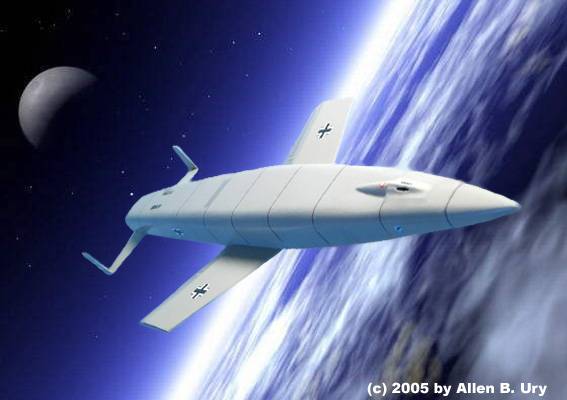You are here
| Size | Seeds | Peers | Completed |
|---|---|---|---|
| 749.34 MiB | 0 | 0 | 0 |
Nazi Discs---UFO documentary
Early Development


The SS E-IV (Entwicklungsstelle 4), a development unit of the SS occult “Order of the Black Sun” was tasked with
researching alternative energies to make the Third Reich independent of scarce fuel oil for war production. Their
work included developing alternative energies and fuels. {To see Adamski's saucer photos and films }

This group developed by 1939 a revolutionary electro-magnetic-gravitic engine which improved Hans Coler’s free
energy machine into an energy Konverter coupled to a Van De Graaf band generator and Marconi vortex dynamo
(a spherical tank of mercury) to create powerful rotating electromagnetic fields that affected gravity and reduced
mass. It was designated the Thule Triebwerk (Thrustwork, a.ka. Tachyonator-7 drive) and was to be installed into
a Thule designed disc.

Since 1935 the Thule Gesellschaft (Society) had been scouting for a remote, inconspicuous, underdeveloped
testing ground for such a craft. Thule found a location in Northwest Germany that was known as (or possibly
designated as) Hauneburg. At the establishment of this testing ground and facilities the SS E-IV unit simply
referred to the new Thule disc as a war product- the “H-Gerat” (Hauneburg Device).
For wartime security reasons the name was shortened to Haunebu in
1939 and was briefly designated RFZ-5 along with Vril‘s machines once
the Hauneburg site was abandoned in favor of the more suitable Vril
Arado Brandenburg aircraft testing grounds.
The early Haunebu I craft of which two
prototypes were constructed were 25 meters in
diameter, had a crew of eight and could
achieve the incredible initial velocity of 4,800
km/h, but at low altitude. Further enhancement
enabled the machine to reach 17,000 km/h.
Flight endurance was 18 hours. To resist the
incredible temperatures of these velocities a
special armor called Victalen { Frozen Smoke }
was pioneered by SS metallurgists specifically
for both the Haunebu and Vril series of disc
craft. The Haunebu I had a double hull of
Victalen. {Frozen Smoke developed in the 30's}
The Experimental KSK Gun
The early models also attempted to
test out a rather large experimental
gun installation- the twin 60 mm KSK
(KraftStrahlKanone, Strong Ray
Cannon) which operated off the
Triebwerk for power. It has been
suggested that the ray from this
weapon made it a laser, but it was
not. The Germans called it an
"anachronism" gun- not belonging to
that time period or out of place.
When a Vril 7 was downed by the
Russians in 1945 a similar underbelly
mounted KSK gun was destroyed
with debris recovered from the battle
site. Postwar the strange metal balls
and tungsten spirals that made up
the weapon could not be identified.
But recently it has been speculated
that the Triebwerk-connected balls
formed cascade oscillators that were
connected to a long barrel-shrouded
transmission rod wrapped in a
precision tungsten spiral, or coil to
transmit a powerful energy burst
suitable to pierce up to 4 in (100 mm)
of enemy armor. The heavy gun
installation, however, badly
destabilized the disc and in
subsequent Haunebu models lighter
MG and MK cannon were supposedly
installed.
The Series Prototypes
The Haunebu I first flew in 1939 and both prototypes made 52 test
flights. In 1942, the enlarged Haunebu II of 26 meters diameter was
ready for flight testing. This disc had a crew of nine and could also
achieve supersonic flight of 6,000 to 21,000 km/h with a flight endurance
of 55 hours. Both it and the further developed 32 meter diameter
Haunebu II Do-Stra had heat shielding of two hulls of Victalen. The craft
were constructed and tested between 1943-44. The craft made 106 test
flights.
By 1944, the perfected war model, the Haunebu II Do-Stra (Dornier
STRAtospharen Flugzeug/Stratospheric Aircraft) was tested. Two
prototypes were built. These massive machines, several stories tall, were
crewed by 20 men. They were also capable of hypersonic speed beyond
21,000 km/h. The SS had intended to produce the machines with
tenders for both Junkers and Dornier but in late 1944/early 1945 Dornier
was chosen. The close of the war, however, prevented Dornier from
building any production models. Yet larger still was the 71 meter
diameter Haunebu III. A lone prototype was constructed before the close
of the war. It was crewed by 32 and could achieve speeds of 7,000 to
40,000 km/h. It had a triple Victalen hull. It is said to have had a flight
endurance of 7 to 8 weeks. The craft made 19 test flights. This craft was
to be used for evacuation work for Thule and Vril in March 1945.
Further plans for a 120 meter diameter Haunebu IV were in the works but no such craft is known to have been
constructed before the end of the war.
- Log in to post comments
